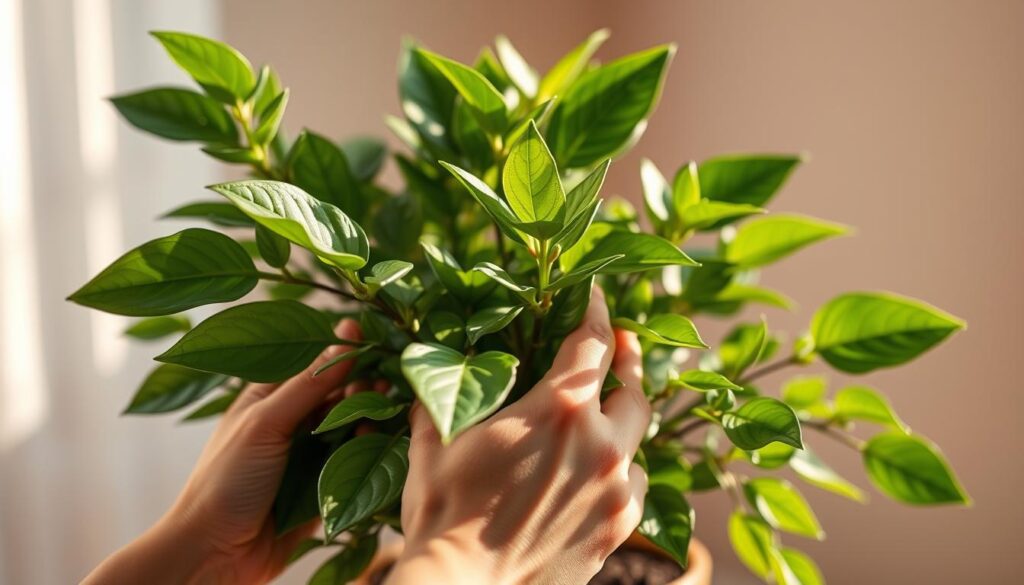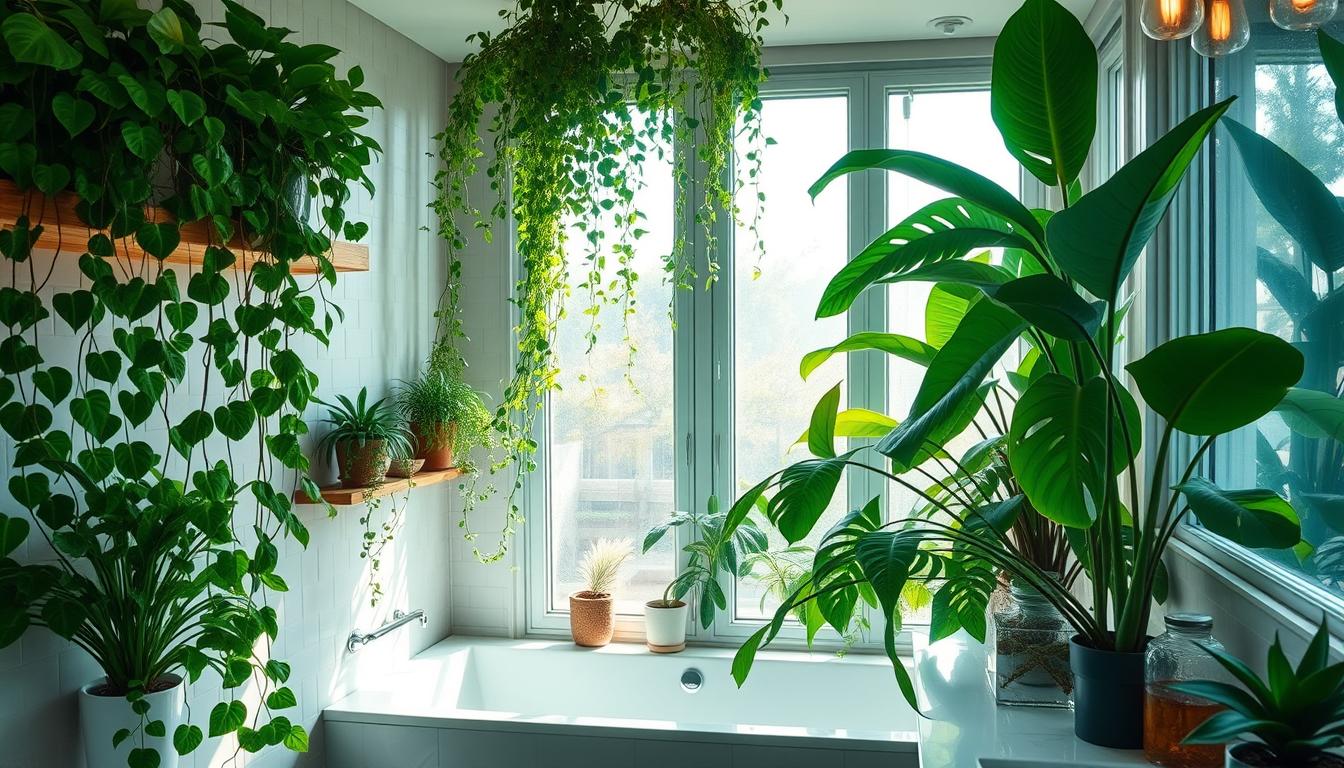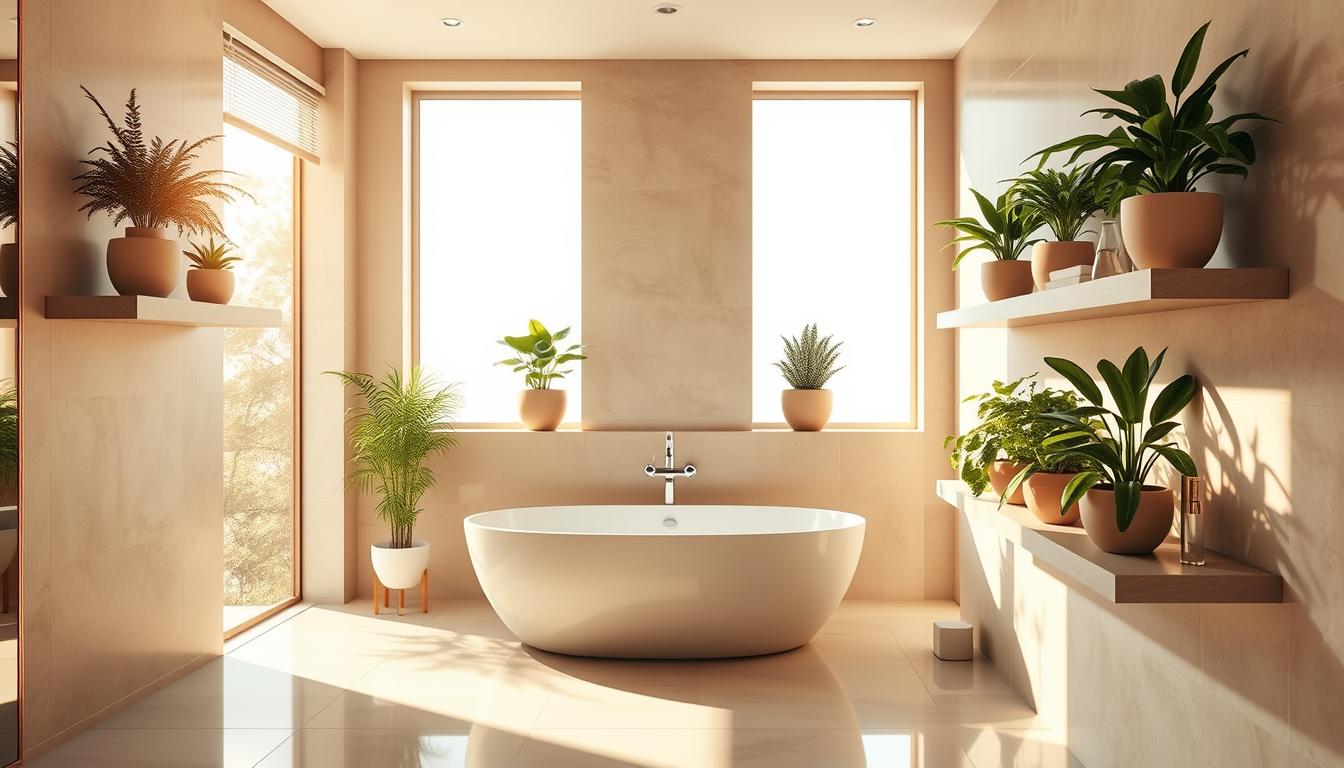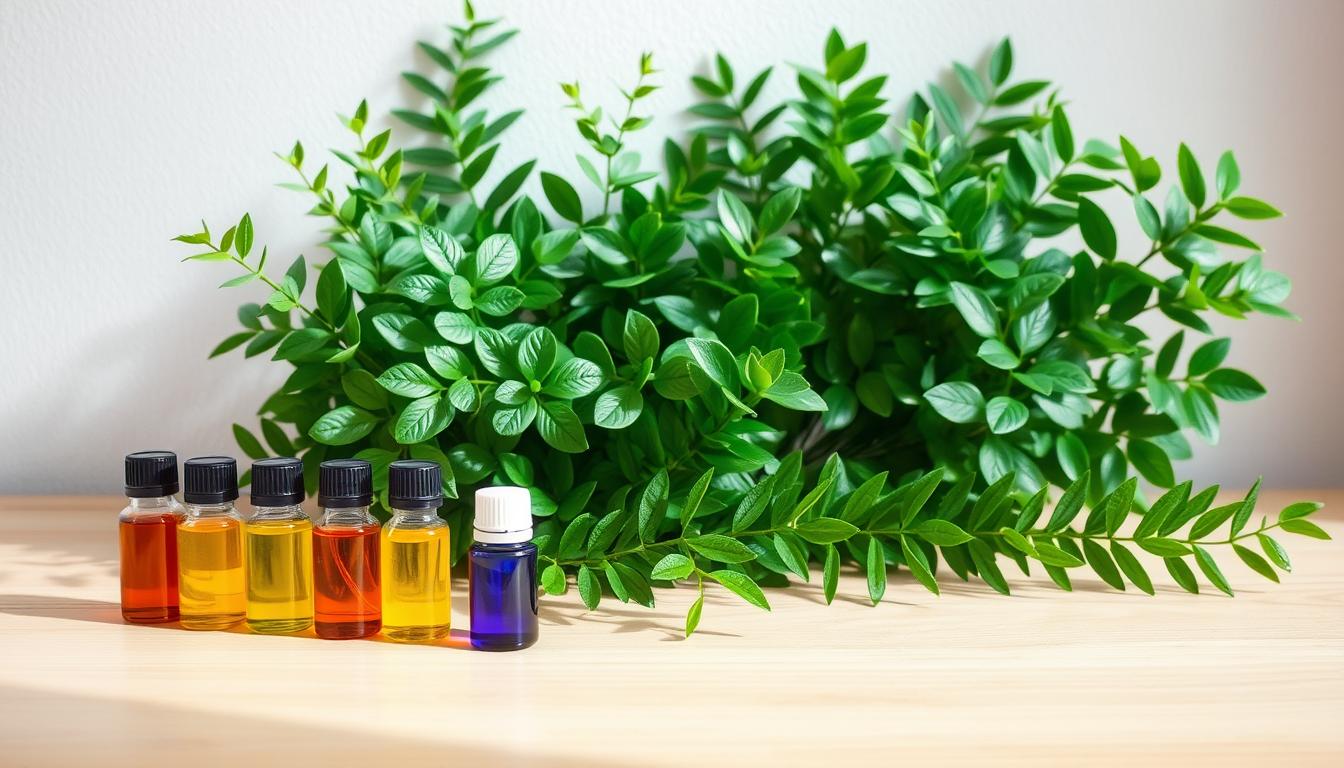Welcome to the ultimate guidance on faux plant upkeep in high humidity! Learning to manage faux plants in moist settings is key. It keeps them looking fresh and real. High humidity can make synthetic plant care look better, making them a top choice for home decor. This guide will give you tips on managing indoor humidity so your fake plants stay beautiful. Get ready to learn how easy it is to keep your faux greenery looking great.
Understanding Humidity and Its Importance for Faux Plants
Humidity is key for both real and faux plants to look good. It helps faux plants seem more vibrant. Keeping the right indoor humidity levels is vital for their beauty and benefits.
Why Humidity Levels Matter for Indoor Plants
Most indoor plants come from humid, tropical places. They do best in humidity between 70-90%. But in winter, indoor air gets dry because of heaters. This dry air can make plants look less lively. So, keeping the right humidity is important for vibrant decor.
How Humidity Affects Plant Appearance and Health
When humidity is low, both real and fake plants don’t look their best. Fake plants can lose their shine and seem less real. To keep your faux plants looking great, watch the humidity. This way, they’ll always be an eye-catching part of your home.
The High-Humidity Fake Plant Survival Guide
Taking care of fake plants in damp places means knowing what they need. Keeping them looking good and lasting longer involves steps like managing moisture right. You can make sure your synthetic greens stay bright and attractive by avoiding common mistakes.
Key Principles of Care for High-Humidity Synthetic Plants
- Regular dusting keeps faux plants looking fresh and vibrant. Use a soft cloth to wipe away dust and debris.
- Keep synthetic plants away from heat sources, such as radiators or direct sunlight, to prevent fading and drying out.
- Store faux plants in environments where humidity levels are naturally stable to maintain their integrity.
- Avoid placing them in rooms subjected to extreme temperature changes, which might affect their materials over time.
- Occasional deep cleaning with mild soap and water can help restore their original luster.
Signs Your Fake Plants Need Attention
Knowing when your fake plants need care is key. You’ll see signs that they’re not at their best. Reacting to these signs keeps your plants looking good for a long time.
How to Recognize When Your Fake Plants Look Dull
After a while, fake plants might not look as lively. Here’s what to watch for:
- Dust accumulation that dulls the colors
- Color fading, indicating sunlight exposure or age
- Drooping leaves, often a sign of improper placement
Checking your plants often helps you spot these problems. This keeps your plants looking bright and welcoming.
Identifying Occasionally Required Care Steps
Caring for fake plants includes some specific steps. Try these tips:
- Dust regularly using a soft cloth or duster.
- Refresh colors with fabric-safe sprays designed for faux plants.
- Strategically reposition plants to optimize light and humidity.
Making the area around your plants look better can help too. Watching for signs of neglect helps your fake plants stay lively.
Ideal Humidity Levels for Maintaining Fake Plants
Maintaining the right environment for synthetic plants boosts their look and lasts longer. Even though faux plants don’t need humidity like real ones, keeping it between 40-60% is best. Knowing your home’s humidity levels is important, especially with the seasons changing.
Understanding Optimal Humidity Ranges
The best humidity levels for plants help keep them looking good. At 40-60% humidity, faux plants stay bright and don’t gather dust. This range helps stop the materials from wearing out. Checking on these conditions often is good for any plant owner.
Why Most Homes Have Low Humidity Levels
Many homes have lower humidity in the cold months. Heating systems take moisture away, making the air dry. This means we need to watch out to keep our faux plants looking right. Knowing how indoor heating changes moisture lets people care for their fake plants better.
Strategies to Create a High-Humidity Environment
It’s key to keep moisture around plants, especially fake ones. Using the right techniques can make your faux plants look fresh and beautiful. Here are some ways to make surroundings more humid.
Using Humidity Trays for Effective Moisture Levels
Humidity trays are great for keeping plants moist. Just fill a shallow tray with water and pebbles. Make sure the plant bases don’t touch the water. This setup increases moisture around the plant safely. Keep the tray filled to keep up the humidity.
Employing Misting for Enhanced Humidity
Misting can quickly up the humidity. Even though it’s usually for real plants, it helps faux ones feel part of the environment. Spray lightly around the plants. Do it in the morning or late afternoon for the best effect.
Integrating Terrariums as Humidity Boosters
Terrariums are both pretty and practical. They create a moist world for fake plants to flourish. When you put faux plants in terrariums, they look great and stay moist. Just watch for condensation to make sure they’re staying humid.
Utilizing Technology for Better Plant Care
Technology has changed how we care for plants. It helps gardeners keep their indoor and faux plants in top condition. With tech, monitoring humidity and creating the perfect environment becomes easier. Smart devices have become key in making plants last longer.
Smart Devices for Monitoring Indoor Humidity
Smart humidity monitors track moisture levels in your house. They link to your phone, alerting you when humidity drops. This way, plant owners can quickly make changes to protect their greens. Keeping an eye on these levels helps maintain a good environment for plants.
The Role of Humidifiers in Plant Preservation
Smart humidifiers help keep the air just right. They fight off dry air that’s bad for fake plants. Besides raising humidity, they can work on a schedule. This makes them super helpful for any plant care plan.
Placement Considerations for Fake Plants
Where you place fake plants can really make them last longer and look better. Putting them in the right spot adds beauty to your home and manages humidity well. It’s important to think about the moisture in your home to keep artificial plants looking fresh.
Choosing the Right Location to Optimize Humidity
Think about putting plants in places that are usually more humid. Here are some great tips for placing your plants:
- Bathrooms are great because they stay moist from showers. This makes them ideal for fake plants.
- Kitchens also have a lot of steam from cooking, which helps plants look more alive.
- Placing plants near water sources like fish tanks or fountains can also help keep them looking good.
Areas of the Home That Naturally Have Higher Humidity
Finding areas in your home that are naturally more humid can help with plant placement. Great spots include:
- Bathrooms, especially if they are well-ventilated.
- Basements often are cooler and more humid, which is good for plants.
- Near windows, where you can find more moisture from condensation.
Common Mistakes in Caring for High-Humidity Plants
People who love faux plants often miss important care tips. These tips help keep indoor plants looking good and living long. Problems usually happen with not draining water right and not managing light well.
Overlooking Water Drainage in Humidity Trays
The way humidity trays drain is often ignored, which is a big mistake. If water stays too long, mold can grow and hurt your faux plants. Make sure these trays drain well to stop water from gathering.
Always check your humidity trays. Empty any water that shouldn’t be there. This keeps a healthy space for your plants.
Not Monitoring Too Much or Too Little Light
People also slip up when it comes to how much light their faux plants get. Even high-humidity faux plants need the right amount of light. Too much makes them fade, and too little means they won’t look vibrant.
Check how much light your faux plants get. This helps you keep them in a well-lit spot. It makes sure they look their best.
Maintenance Tips for Long-Lasting Faux Plants
Keeping faux plants looking great means cleaning them regularly and changing their care with the seasons. You’ll enjoy beautiful decor all year long. Basic cleaning and seasonal care changes are key to keeping faux plants in top shape.
Routine Cleanings to Keep Faux Plants Looking Fresh
It’s important to clean faux plants often to keep them looking good. Here’s what to do:
- Dust your faux plants every week to prevent buildup.
- Use a soft cloth or a feather duster to gently remove dust and debris.
- Occasionally, submerge smaller faux plants in soapy water for deeper cleaning.
- For larger plants, use a damp cloth to wipe down leaves and stems.
Seasonal Adjustments for Optimal Plant Care
Adjusting your care for the seasons helps faux plants last longer and look better. Here are some tips:
- Relocate plants to areas with optimal humidity whenever the seasons change.
- Change decorations based on the season to keep the environment refreshing.
- Inspect for fading or discolored areas caused by sunlight exposure and adjust placement accordingly.

Conclusion
To keep your faux plants looking their best, a high-humidity environment is key. It’s all about knowing their humidity needs. Also, using smart placement and care will help them last longer. This way, your faux plants will keep your home looking good.
Use humidity trays, mist them, and put them in wet areas. Each step is vital for keeping your plants in top shape. Notice when they need care. A regular cleaning schedule will stop them from getting worse. This keeps them fresh all year.
With the right know-how, making a humid home for your faux plants is easy. Follow these tips for a home filled with beautiful, fake greenery. Enjoy a home that looks greener and more inviting by embracing these ideas.



